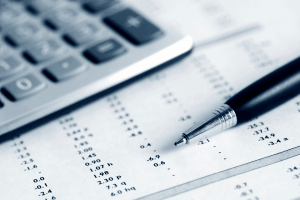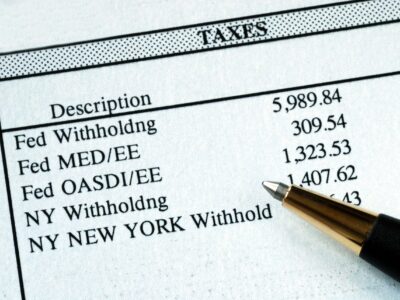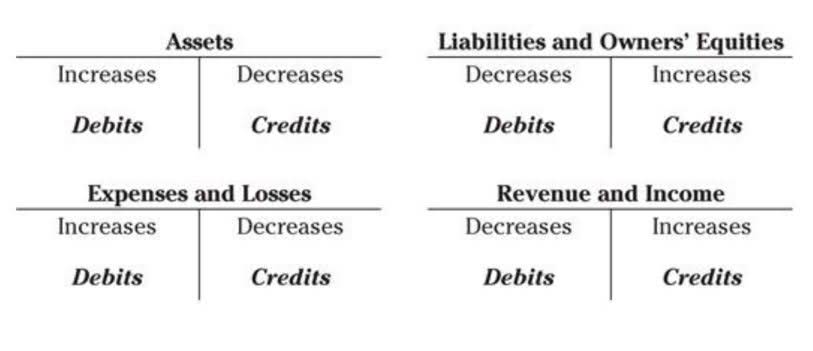Basically, once the basic accounting terminology is learned and understood, the normal balance for each specific industry will become second nature. Additionally, the normal balance affects financial ratios derived from the financial statements. Using normal balances ensures that these ratios are calculated correctly and reflect the intended analysis. After reviewing the feedback we received from our Explanation of Debits and Credits, I decided to prepare this Additional Explanation of Debits and Credits. In it I use the accounting equation (which is also the format of the balance sheet) to provide the reasoning why accountants credit revenue accounts and debit expense accounts.
Double-Entry Accounting
For contra-asset accounts, the rule is simply the opposite of the rule for assets. Therefore, to increase Accumulated Depreciation, you credit it. Here’s a table summarizing the normal balances of the accounting elements, and the actions to increase or decrease them.
A glance at an accounting chart can give you a snapshot of a company’s financial health. A credit balance occurs when the credits exceed the debits in an account. In reality, however, any account can have either a debit or credit balance. An income statement account for expense items that are too insignificant to have their own separate general ledger accounts. A temporary account to which the income statement accounts are closed. This account is then closed to the owner’s capital account or a corporation’s retained earnings account.
When an account has a balance that is opposite the expected normal balance of that account, the account is said to have an abnormal balance. For example, if an asset account which is expected to have a debit balance, shows a credit balance, then this is considered to be an abnormal balance. In conclusion, the concept of normal balance is a fundamental aspect of accounting that ensures accuracy, consistency, and reliability in financial reporting. By applying the principles of normal balance, businesses can maintain balance in their financial records and present transparent and meaningful financial information to stakeholders.
Conversely, if you record a transaction on the opposite side, it decreases the balance of the account. The “normal balance” for an account in accounting refers to whether that account typically carries a debit or credit balance. In other words, it’s the side (debit or credit) that increases the balance of the account. It is determined by the nature of an account in the chart of accounts under the double-entry bookkeeping system.
- They show changes in accounts within the bookkeeping system.
- Revenue is the income that a company earns from its business activities, typically from the sale of goods and services to customers.
- The increase in inventory, an asset, is a debit because that’s its normal balance for inventory.
- For example, interest earned by a manufacturer on its investments is a nonoperating revenue.
- Net purchases is the amount of purchases minus purchases returns, purchases allowances, and purchases discounts.
- Still others use it when referring to nonoperating revenues, such as interest income.
The normal balance for a revenue or gain account is a credit
Each of the accounts in a trial balance extracted from the bookkeeping ledgers will either show a debit or a credit balance. The normal balance of any account is the balance (debit or credit) which you would expect the account have, and is governed by the accounting equation. Knowing the normal balance of each account is key to being able to records the transactions correctly and maintain the balance in the accounting equation. This information is also valuable when it comes to spotting any inconsistencies. For example, if a Liability account has a debit balance, then it is necessary to check if no errors were made in the bookkeeping records. Temporary accounts are generally the income statement accounts.
A record in the general ledger that is used to collect and store similar information. For example, a company will have a Cash account in which every transaction involving cash is recorded. A company selling merchandise on credit will record these sales in a Sales account and in an Accounts Receivable account. This means that the new accounting year starts with no revenue amounts, no expense amounts, and no amount in the drawing account. Asset, liability, and most owner/stockholder equity accounts are referred to as permanent accounts (or real accounts).
Now that we have explored the relationship between normal balances and assets, liabilities, and equity, let’s move on to discussing the importance of normal balances in accounting. Next, let’s explore the relationship between normal balances and the categories of assets, liabilities, and equity in accounting. When it comes to the world of accounting, maintaining balance is of utmost importance.
Credit normal balance and debit normal balance
The inventory of a manufacturer should report the cost of its raw materials, work-in-process, and finished goods. The cost of inventory should include all costs necessary to acquire the items and to get them ready for sale. When we’re talking about Normal Balances for Expense accounts, we assign a Normal Balance based on the effect on Equity. Because of the impact normal balance of expense accounts on Equity (it decreases), we assign a Normal Debit Balance.
Debits and Credits
An allowance granted to a customer who had purchased merchandise with a pricing error or other problem not involving the return of goods. If the customer purchased on credit, a sales allowance will involve a debit to Sales Allowances and a credit to Accounts Receivable. A current asset whose ending balance should report the cost of a merchandiser’s products awaiting to be sold.
- Accordingly, Assets will normally have a debit balance and Liabilities – credit.
- Meanwhile, liabilities, equity, and revenues should be Credit.
- When your business racks up costs—think salaries, rent, or utilities—it feeds these accounts with debit entries.
- Understanding this duality is essential for maintaining the equilibrium of the accounting equation, which is the cornerstone of financial accounting.
On the other hand, liability accounts like Accounts Payable and Notes Payable have a credit normal balance. In business, making sure debits and credits in journal entries match is vital for clear financial reports. This affects how a company makes money and manages its spending, which changes its financial health. University instructors and accounting supervisors put a lot of effort into teaching this. They use tools like accounting online resources to help tell the financial story accurately. A solid understanding of debits and credits helps keep financial records clear and effective.
Debits and credits are terms used by bookkeepers and accountants when recording transactions in the accounting records. The amount in every transaction must be entered in one account as a debit (left side of the account) and in another account as a credit (right side of the account). This double-entry system provides accuracy in the accounting records and financial statements.
Income Statement
At the same time, just because the normal balance of a particular account is debit (or credit), it does not mean the account’s balance will be debit (or credit). Normal balance is just a way of telling which side the transaction would increase and which side it would decrease. To maintain the balance, the left side (debits) has to equal the right side (credits). So, if you a debit entry, you are going to have to have a credit entry to equal it.

.jpeg)
.jpg)
.jpeg)
.jpeg)
.jpeg)











.png)
.jpeg)
.jpeg)
.png)
Son Yorumlar